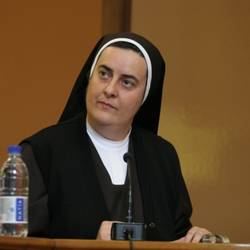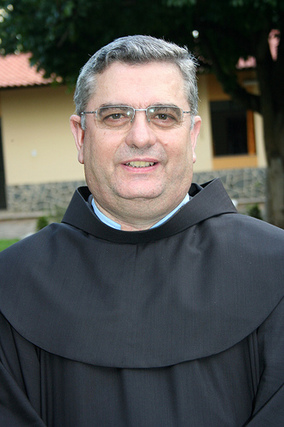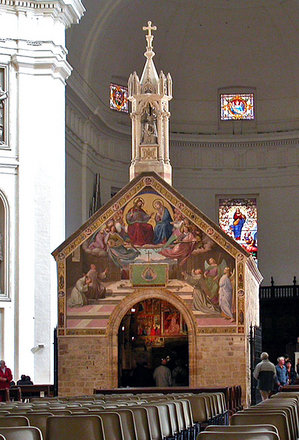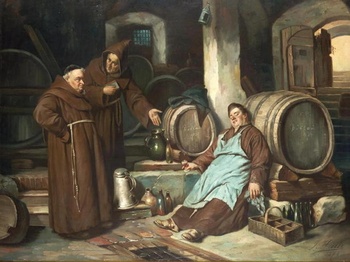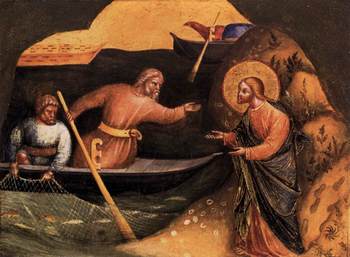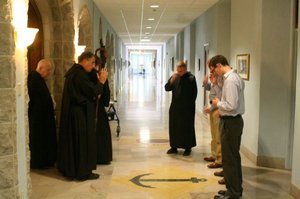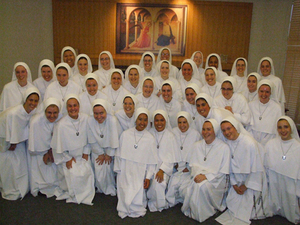 I’m always curious to where the various religious orders are in terms of ministry and the manpower. What can we extrapolate from the numbers and how is the charism lived? Next to the Society of Jesus the Order of Friars Minor are the most significant orders Mother Church has to preach the Gospel and to administer sacraments.
I’m always curious to where the various religious orders are in terms of ministry and the manpower. What can we extrapolate from the numbers and how is the charism lived? Next to the Society of Jesus the Order of Friars Minor are the most significant orders Mother Church has to preach the Gospel and to administer sacraments.
Prescinding what may be several institutional issues like faithfulness to the charism, orthodox teaching, authentic and holy life according to the mind of the founder, and the like, Franciscan friars have taken up the call to serve the Divine Master since the 13th century. The matter becomes: what difference does Jesus and the Church make in the lives of the friars? In the laity who follow the Saint Francis?
Franciscan Friar Father Dominic, a Franciscan historian stationed at St. Bonaventure University in Western New York, presented these facts:
The Order began the year 2015 with a membership of 13,632 friars. This is 113 friars fewer than the previous year, as the growth of the Order in the younger entities cannot yet compensate for the losses in Western Europe and North America. There are 11,794 solemnly professed friars, including 9,243 priests, 59 permanent deacons, 416 friars preparing for ordination, and 1957 lay friars. There was a slight increase of friars in initial formation — 1413 temporary professed and 425 novices. In terms of age, 34% of the world’s friars are under the age of 45, 29% between the ages of 45-64, and 37% over the age of 65.
A closer look at the Order’s six regions shows considerable divergence: four registered growth from the preceding year, whereas two — dominated by elderly friars — posted declines. These were Western Europe, with 3,999 friars, which was down 125 friars from the preceding year, and North America (the U.S. and Canada), with 1,273 friars, which was down 50. On the other hand, the other four regions of the Order showed growth: Latin America, with 3,334 friars, was up 20 friars; Africa, with 1,161 friars (up 30); Asia, with 1423 friars (up 5), and Eastern Europe, with 2442 friars (up 15). To illustrate the age difference among these entities: in the English-speaking Conference, for every friar under the age of 45, there are seven friars over 65. In Africa, on the other hand, the friars under the age of 45 outnumber the seniors 3 to 1.
Holy Name Province has now slipped to the eighth largest of the Order’s 125 entities. Just two years ago, it was fifth largest. The Province of Sts. Francis and James (Jalisco, Mexico) continues to be in first place with 472 friars (120 of whom are in initial formation) The Immaculate Conception Province (São Paolo, Brazil) follows, with 379 members (40 in formation). The third largest entity is now the Immaculate Conception Province (Krakow, Poland), with 338 friars, followed closely by the Province of the Holy Cross (Sarajevo, Bosnia) with 336 members. The German province (Munich) is fifth (322), and the Province of St. Anthony (Venice, Italy), is sixth (309). Slightly ahead of Holy Name (304 friars) is now the Assumption Province (Katowice, Poland) with 307 friars.
In terms of individual nations where the Order is present, Italy still has by far the greatest number of friars (2,038), followed by the United States (1,145), Poland (1,006), Mexico (990), and Brazil (950). It is interesting to note that these five countries comprise almost half the Franciscan friars in the world.
Holy Name, with 304 friars, continues to be the largest entity in the Order’s English-speaking Conference. The other provinces of the ESC are Sacred Heart, based in St. Louis, with 207 members; the Irish Province (which now includes Great Britain), 179; St. Barbara (based in Oakland, Calif.), 168; St. John the Baptist (Cincinnati), 147; Immaculate Conception (New York), 121; Assumption BVM (Franklin, Wis.), 111; St. Joseph (Montreal, Quebec), 68; Our Lady of Guadalupe (Albuquerque, N.M.), 57; Malta, 56; Lithuania, 42; and Christ the King (Edmonton, Alberta), with 33.
